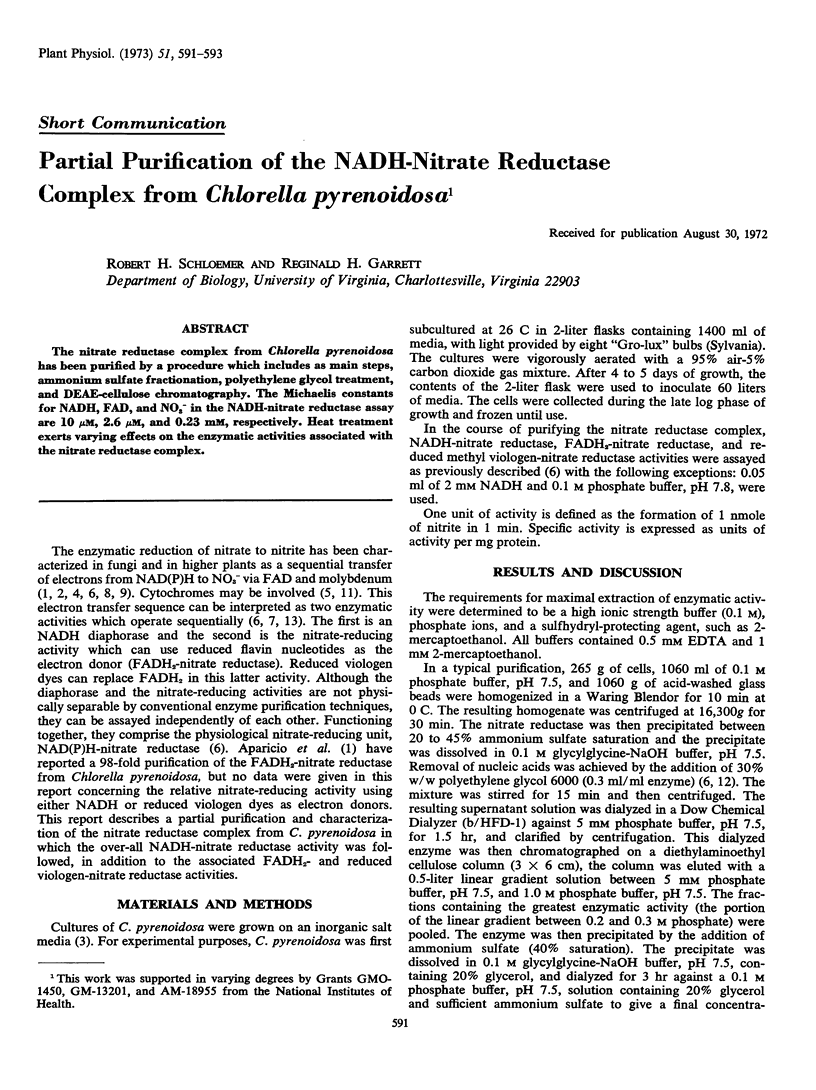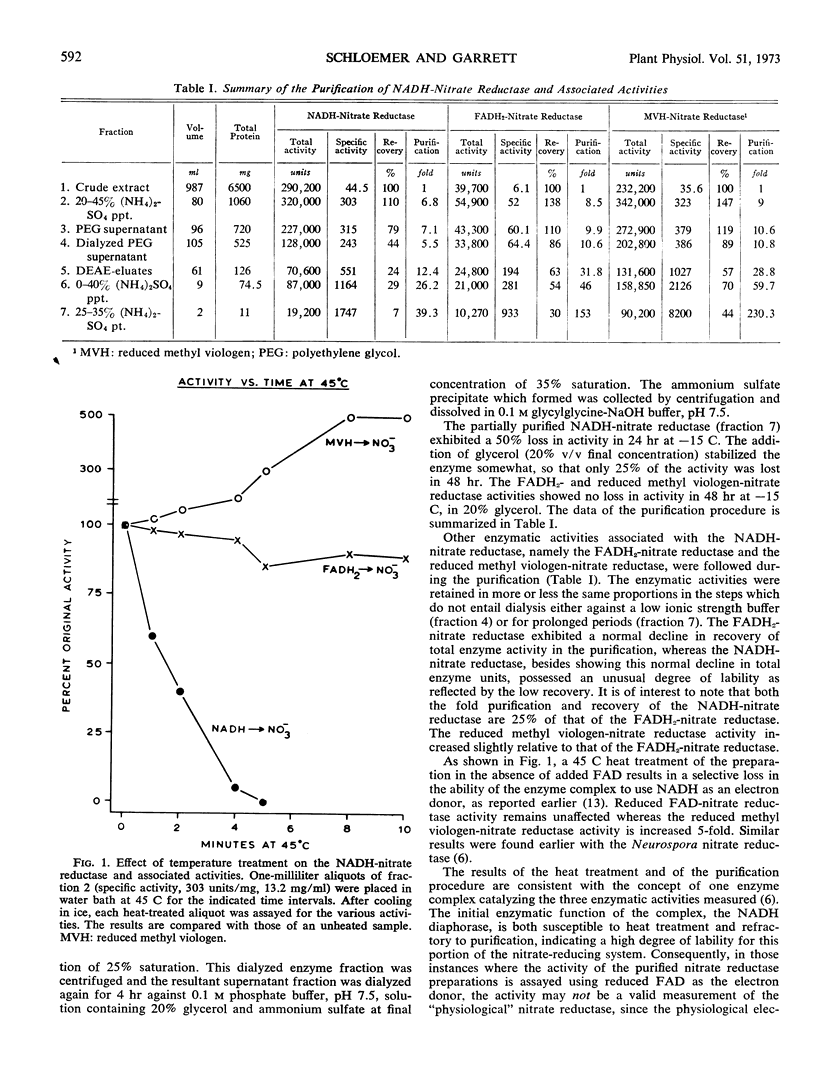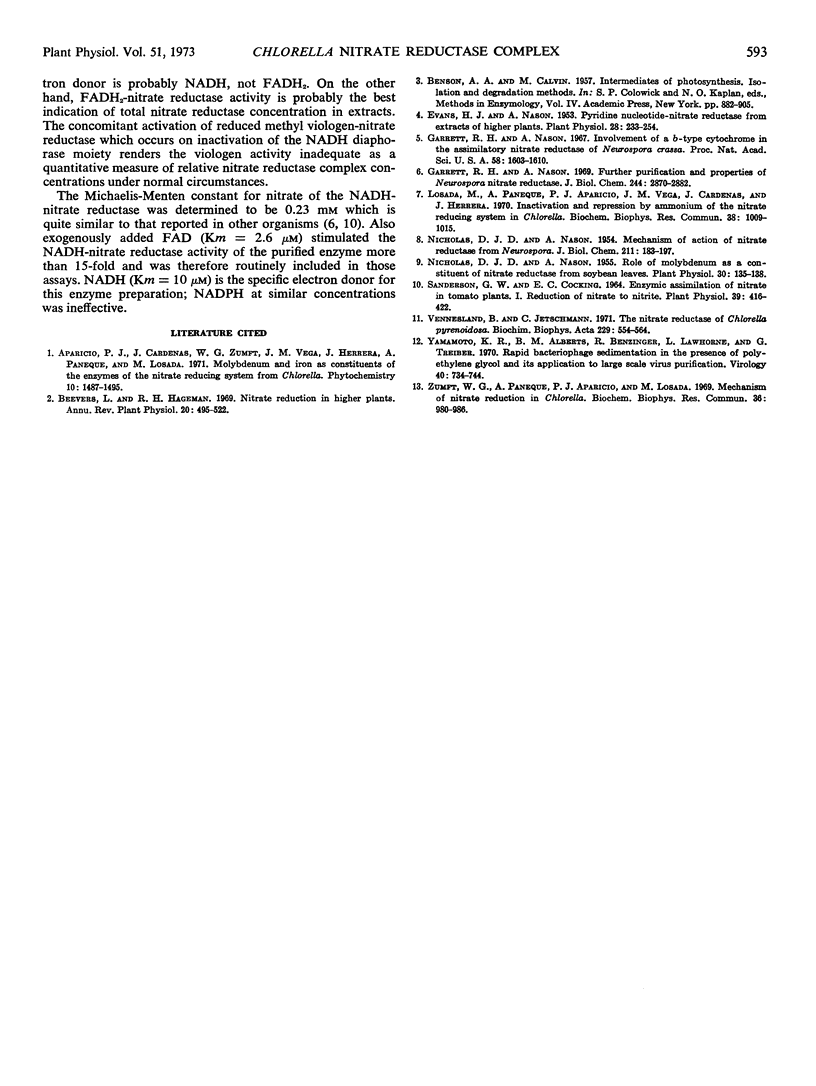Abstract
The nitrate reductase complex from Chlorella pyrenoidosa has been purified by a procedure which includes as main steps, ammonium sulfate fractionation, polyethylene glycol treatment, and DEAE-cellulose chromatography. The Michaelis constants for NADH, FAD, and NO3− in the NADH-nitrate reductase assay are 10 μm, 2.6 μm, and 0.23 mm, respectively. Heat treatment exerts varying effects on the enzymatic activities associated with the nitrate reductase complex.
Full text
PDF


Selected References
These references are in PubMed. This may not be the complete list of references from this article.
- Evans H. J., Nason A. Pyridine Nucleotide-Nitrate Reductase from Extracts of Higher Plants. Plant Physiol. 1953 Apr;28(2):233–254. doi: 10.1104/pp.28.2.233. [DOI] [PMC free article] [PubMed] [Google Scholar]
- Garrett R. H., Nason A. Further purification and properties of Neurospora nitrate reductase. J Biol Chem. 1969 Jun 10;244(11):2870–2882. [PubMed] [Google Scholar]
- Garrett R. H., Nason A. Involvement of a B-type cytochrome in the assimilatory nitrate reductase of Neurospora crassa. Proc Natl Acad Sci U S A. 1967 Oct;58(4):1603–1610. doi: 10.1073/pnas.58.4.1603. [DOI] [PMC free article] [PubMed] [Google Scholar]
- Losada M., Paneque A., Aparicio P. J., Vega J. M., Cárdenas J., Herrera J. Inactivation and repression by ammonium of the nitrate reducing system in chlorella. Biochem Biophys Res Commun. 1970 Mar 27;38(6):1009–1015. doi: 10.1016/0006-291x(70)90340-2. [DOI] [PubMed] [Google Scholar]
- NICHOLAS D. J., NASON A. Mechanism of action of nitrate reductase from Neurospora. J Biol Chem. 1954 Nov;211(1):183–197. [PubMed] [Google Scholar]
- Nicholas D. J., Nason A. Role of Molybdenum as a Constituent of Nitrate Reductase from Soybean Leaves. Plant Physiol. 1955 Mar;30(2):135–138. doi: 10.1104/pp.30.2.135. [DOI] [PMC free article] [PubMed] [Google Scholar]
- Sanderson G. W., Cocking E. C. Enzymic Assimilation of Nitrate in Tomato Plants. I. Reduction of Nitrate to Nitrite. Plant Physiol. 1964 May;39(3):416–422. doi: 10.1104/pp.39.3.416. [DOI] [PMC free article] [PubMed] [Google Scholar]
- Yamamoto K. R., Alberts B. M., Benzinger R., Lawhorne L., Treiber G. Rapid bacteriophage sedimentation in the presence of polyethylene glycol and its application to large-scale virus purification. Virology. 1970 Mar;40(3):734–744. doi: 10.1016/0042-6822(70)90218-7. [DOI] [PubMed] [Google Scholar]
- Zumft W. G., Paneque A., Aparicio P. J., Losada M. Mechanism of nitrate reduction in Chlorella. Biochem Biophys Res Commun. 1969 Sep 10;36(6):980–986. doi: 10.1016/0006-291x(69)90300-3. [DOI] [PubMed] [Google Scholar]


